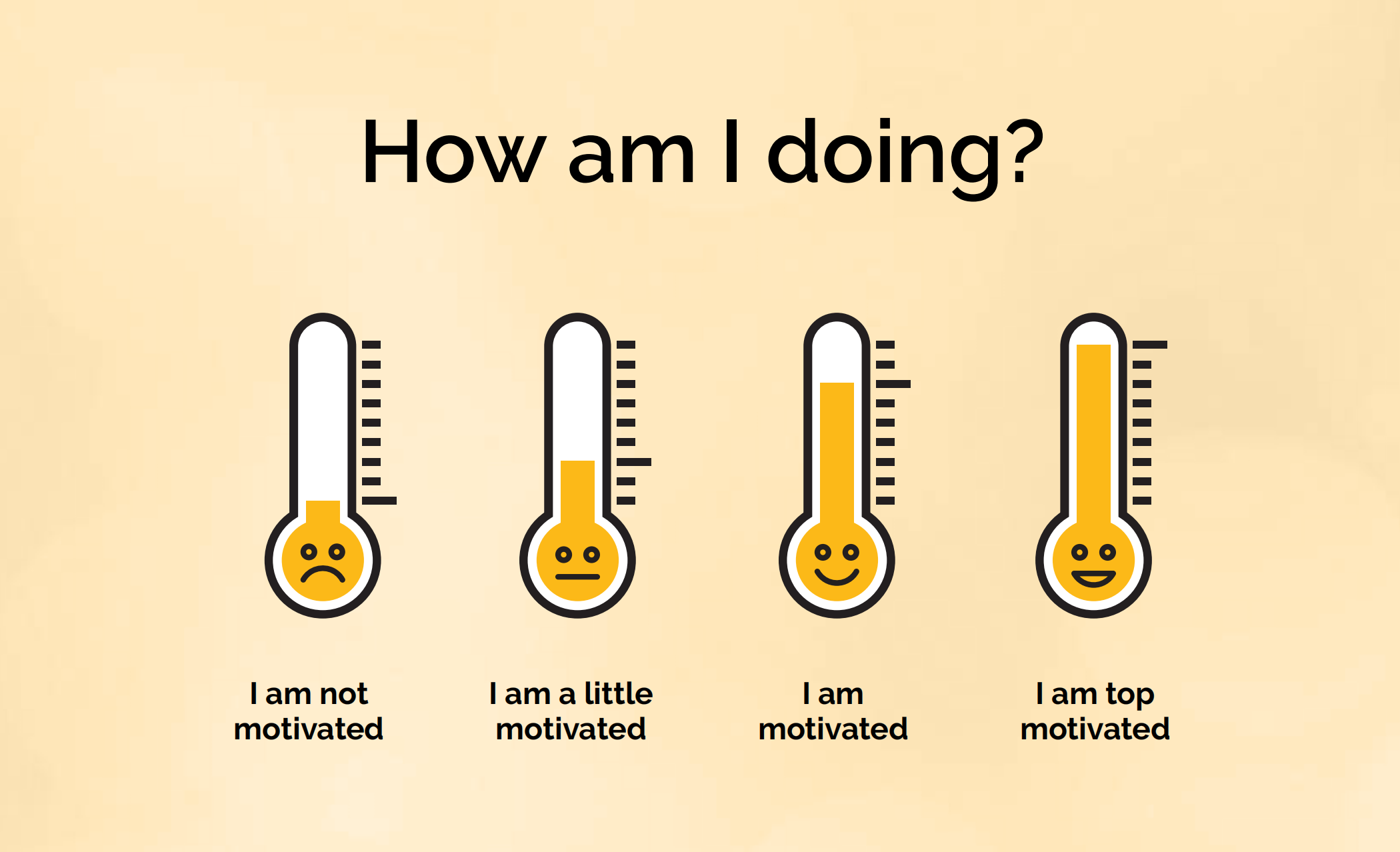Motivation
Izpildes nosacījumi
This book is based on the work of iben, Dissing, Sandahl
10. Practical Ideas for Teachers and Trainers
How am I Doing Diagram

RATIONALE
The diagram is a graphic way of visualizing students’ motivation. Based on the teacher’s judgment, they are made aware that they need to look at the diagram and think about how motivated they are. It will help them ask for a break, a hug, or something that can help them get in touch with themselves, their motivation, and regain energy.
OBJECTIVE
Students must feel inward to scale their emotional and sensational state. The diagram should be visible to everyone in the class.
PROCEDURE
The teacher introduces the Diagram for the class:
This is a diagram we are going to use in this class because you will train your awareness of how motivated you are for teaching. Can anyone tell the rest of the class what the four different states mean? Get four students to explain one state each.
That way, the teacher involves the students to make them take ownership of the Diagram, which they will feel a responsibility to adopt into the class. Make them give examples of how their bodies look, how they behave, or what they say when they are in one of the four states.
Explain further, but acknowledge first:
• That is correct – you have already understood the Diagram and explained it very well. I can very well recognize your different states when you acted them out for us. Very fun.
• Many things can affect your motivation, and in this class, it is okay to feel as you feel. We want to take care of each other here and help if it is needed. Therefore, this Diagram can be a helpful tool for me as a teacher because I can pause from the teaching or go talk with you solely if you need me. But it is also suitable for you. Can anyone guess why it can also be a helpful tool for you?
Let them think about it and acknowledge their suggestions.
• There are so many right answers, thank you. Yes, it is helpful for you, too, because you can support your classmates to regain their motivation. You can do it because you are good classmates and because we take care of each other in this class. Isn’t that correct?
• Can any of you come up with some suggestions on regaining motivation, if it is not existent?
Write their answers down on the board. Each answer will tell you what works for the student who says it. Students often know what works for them. Take your own notes or let all of the students come up with what works for them. Then it gets more comfortable for everyone to support better.
• So from now on, if I ask you how it goes, you can look at the Diagram and better explain how motivated you are for learning and concentrating. You are also welcome to raise your finger and announce that you are not motivated and need a break. It is also an option. You can either use the information for your own evaluation, share it with the rest of the class by show of hands, or I can talk with you about why the motivation is at one level or another. We are here for each other.
WHAT TO OBSERVE
It feels good to be seen and acknowledged for the students, no matter what emotional state they are in. Therefore look for students who take their guards down, who show care and kindness towards their classmates – and feel better themselves. It feels good to receive positive attention, but it also feels fantastic giving back to others.
NOTE TO TRAINER
This tool only makes sense if it is regularly used in the class. Make the
teachers involved in this and don’t stop after a week, but integrate it in the
way the class function. Awareness of the agency the students will feel for their own motivation are priceless.